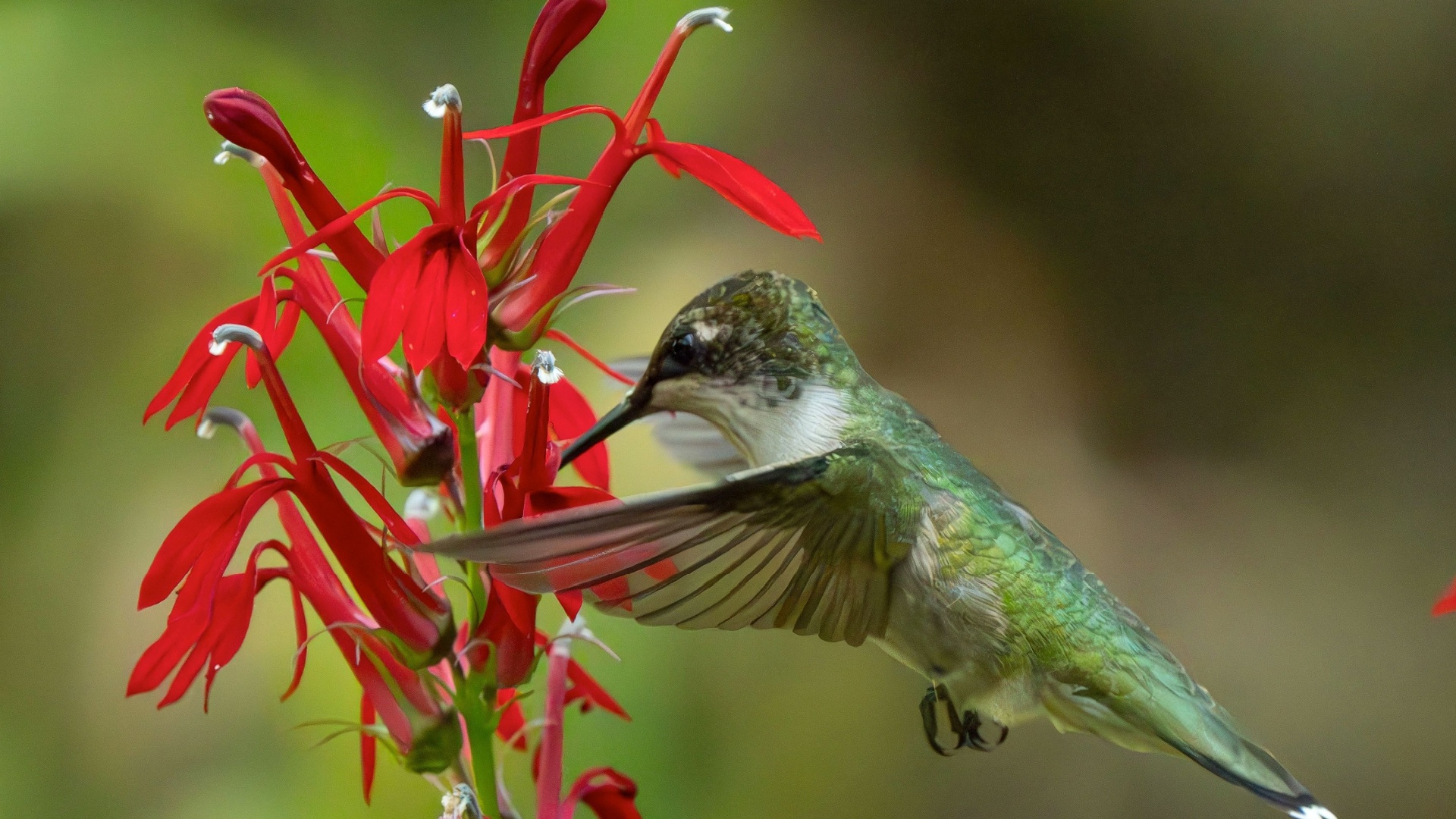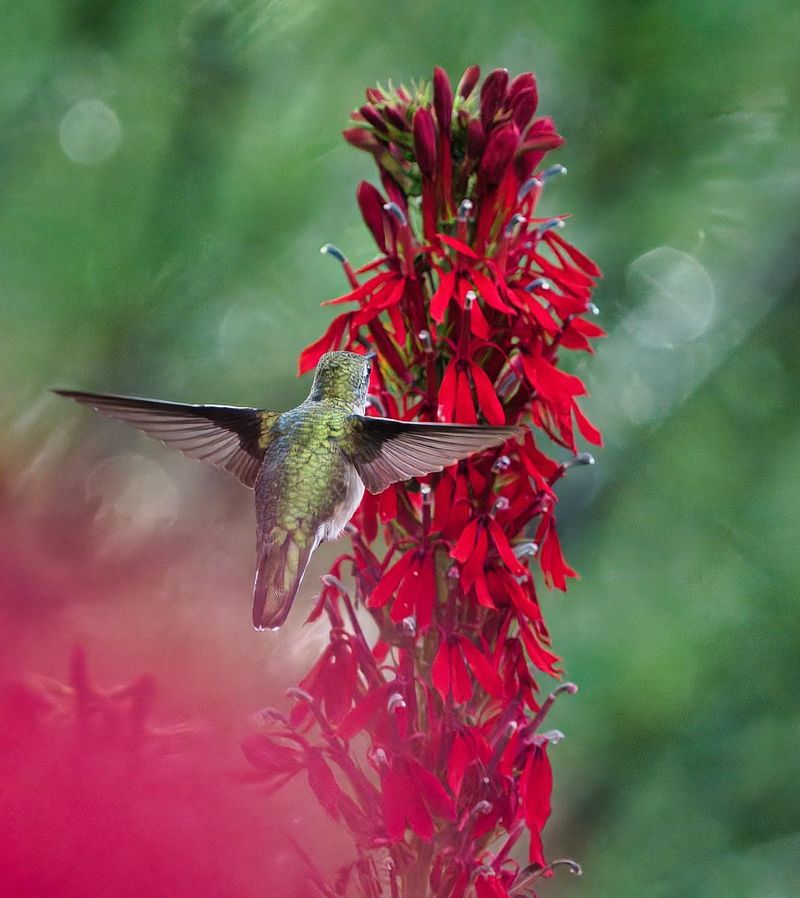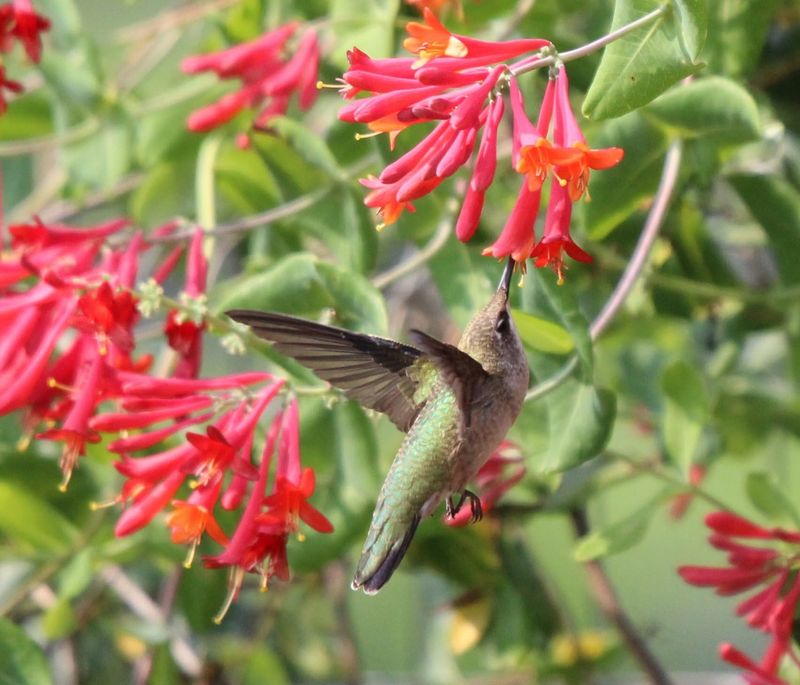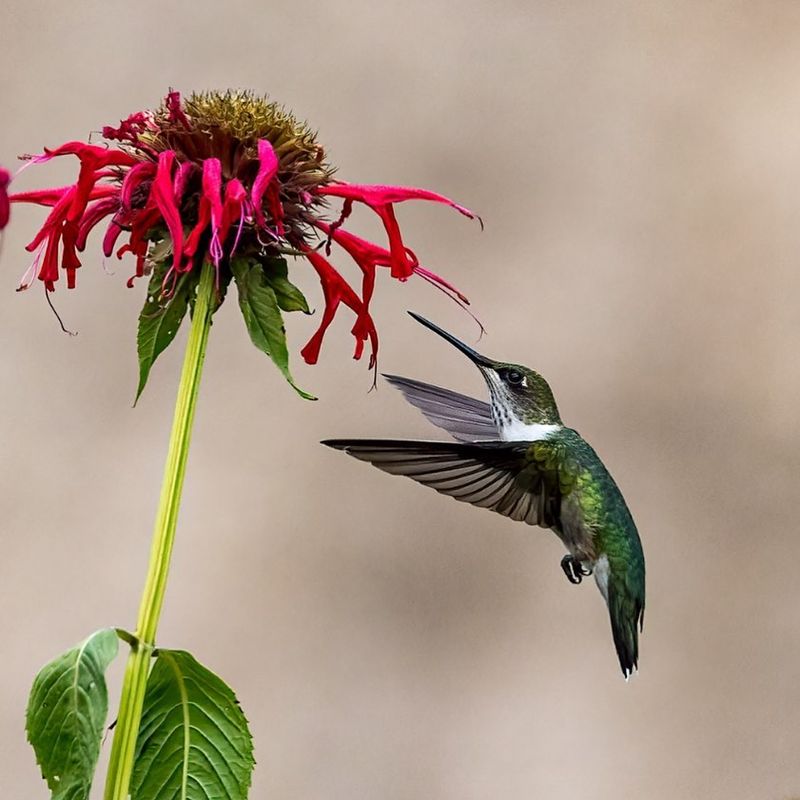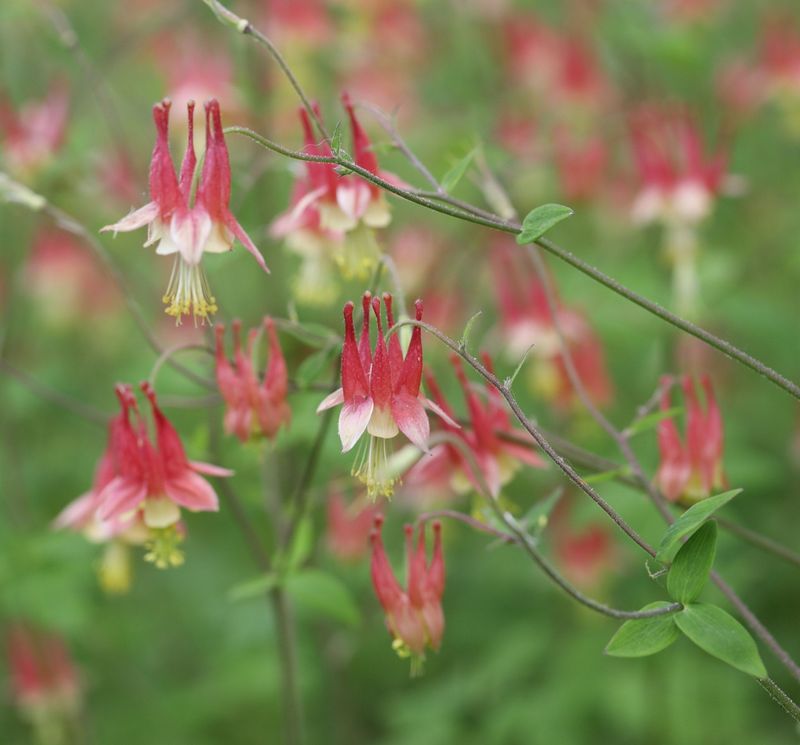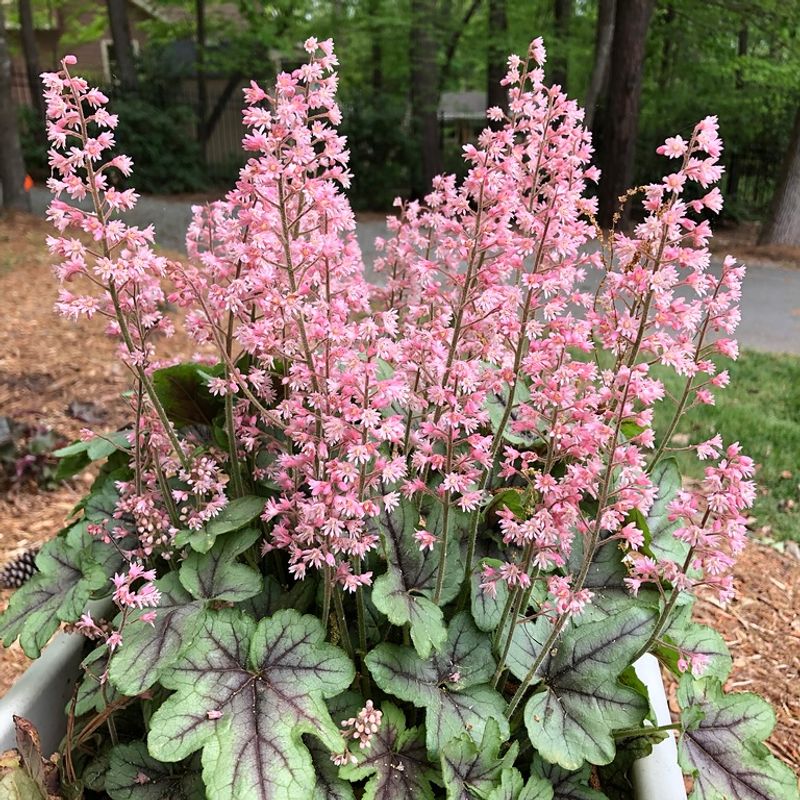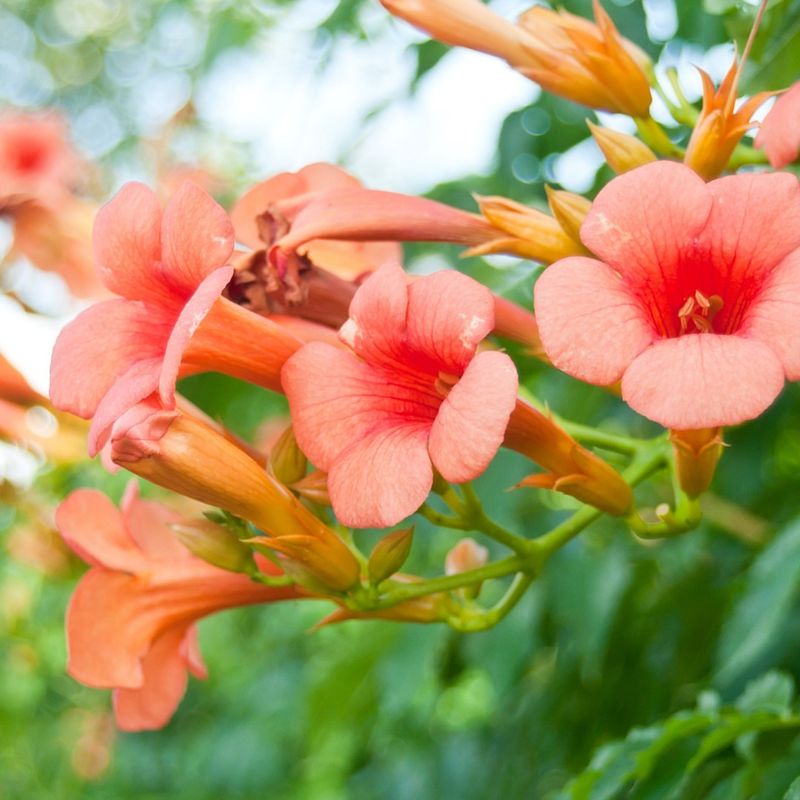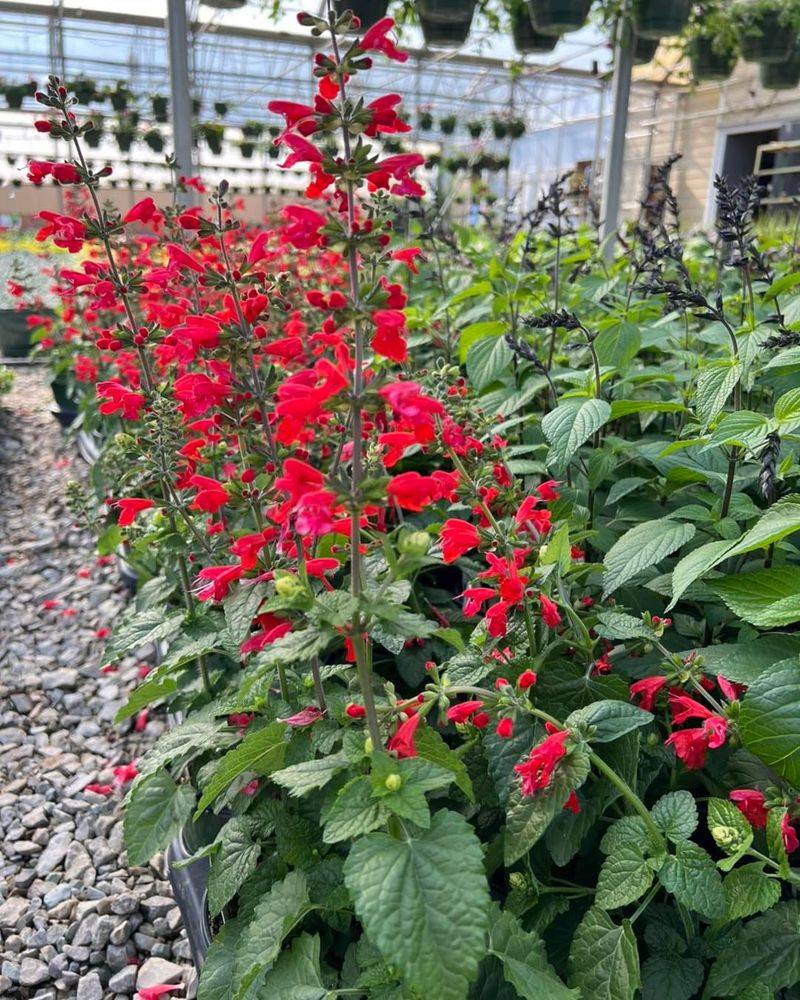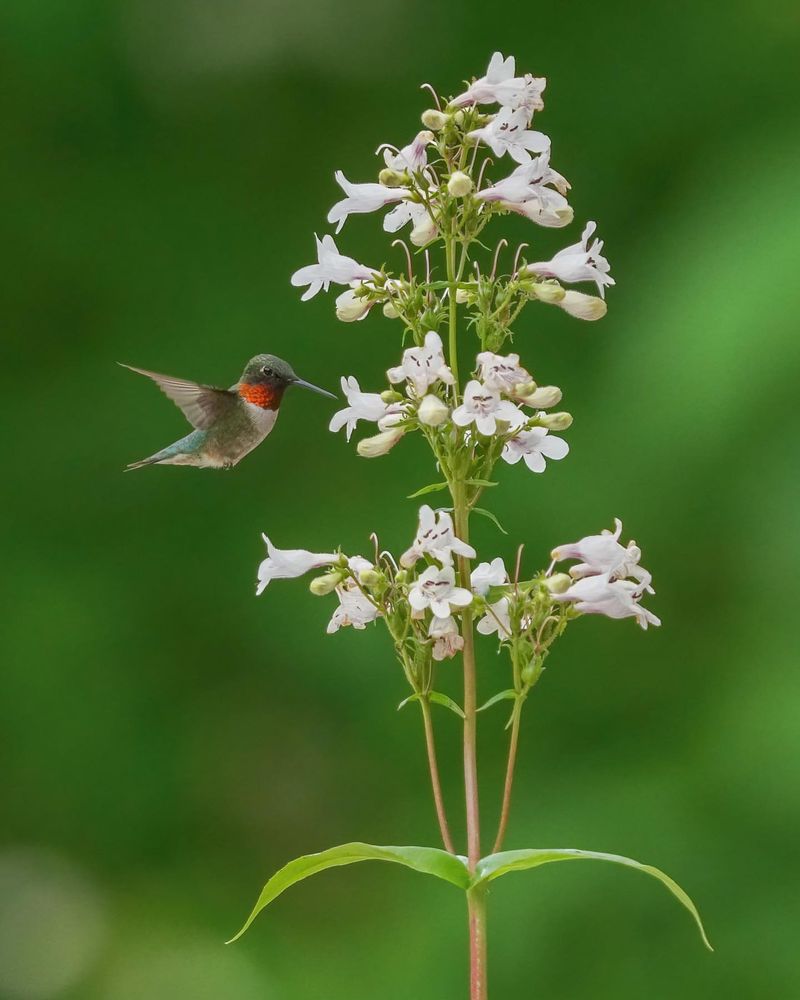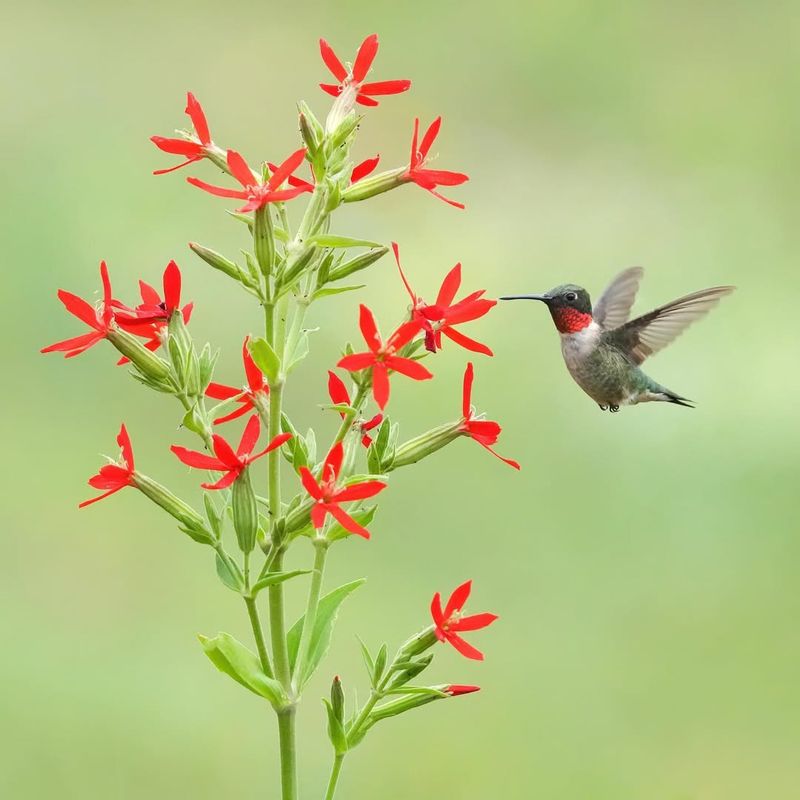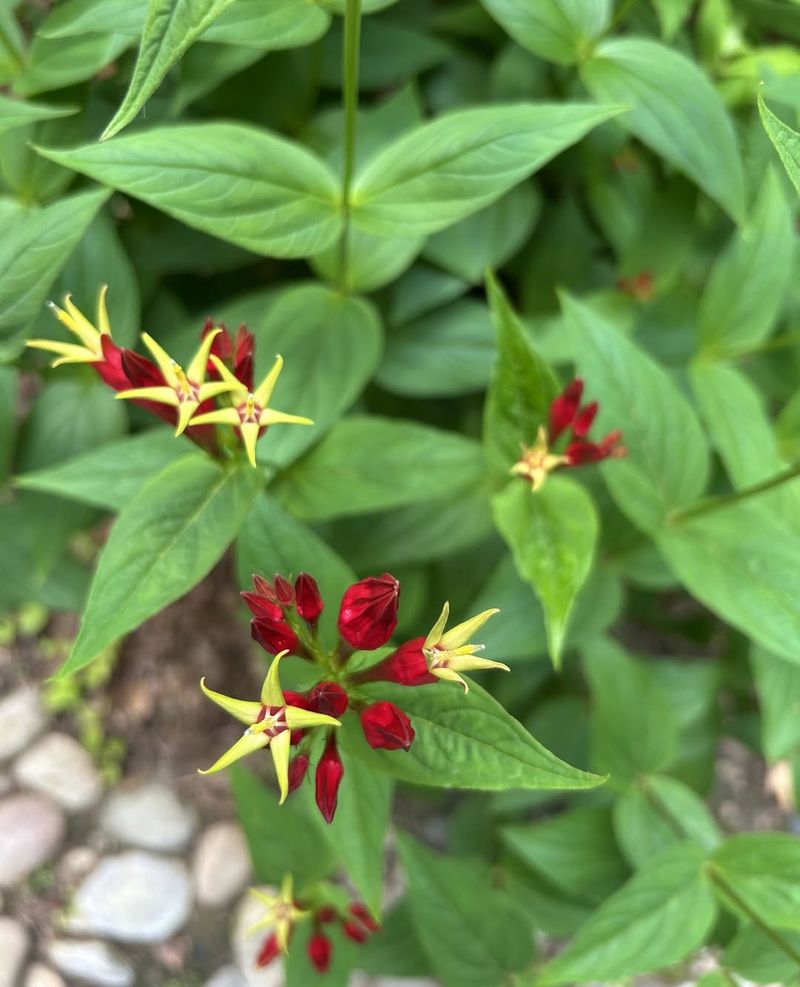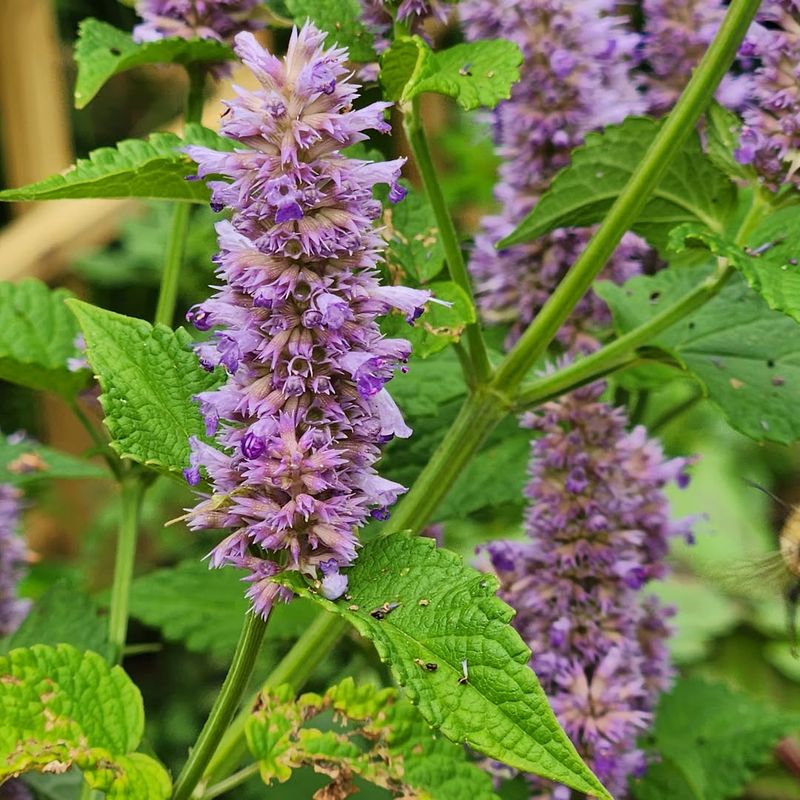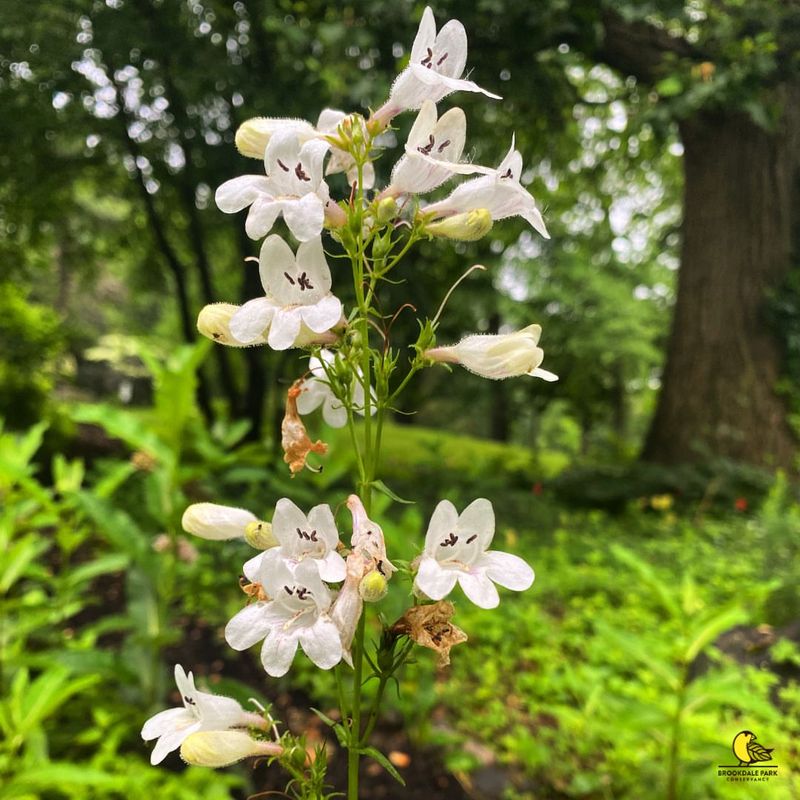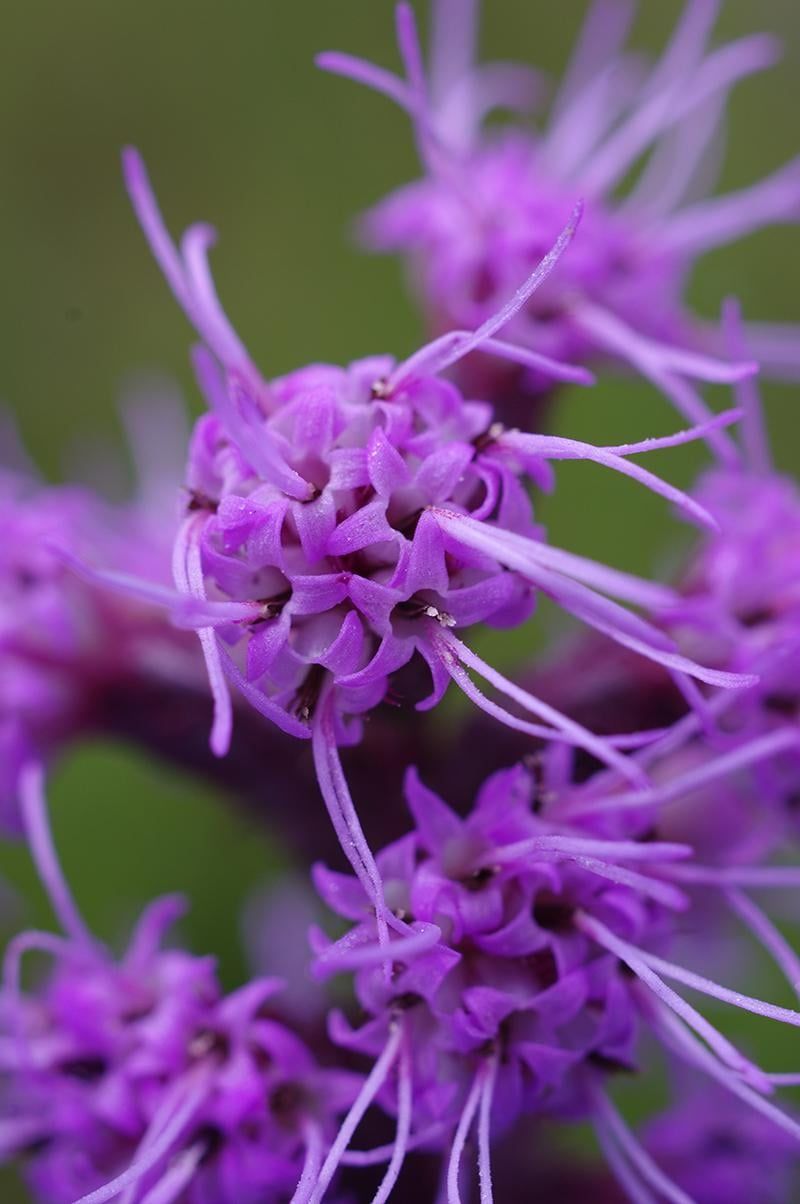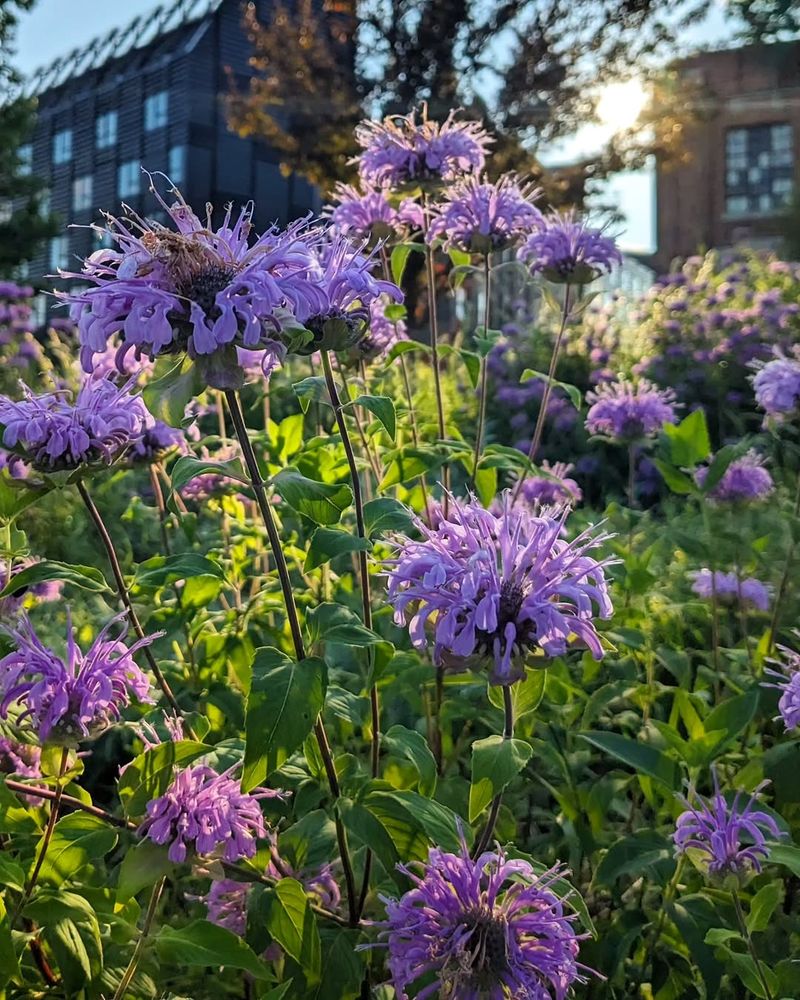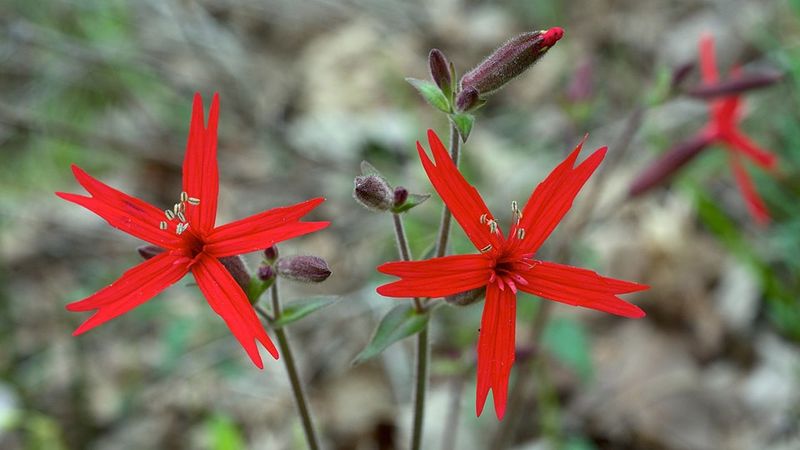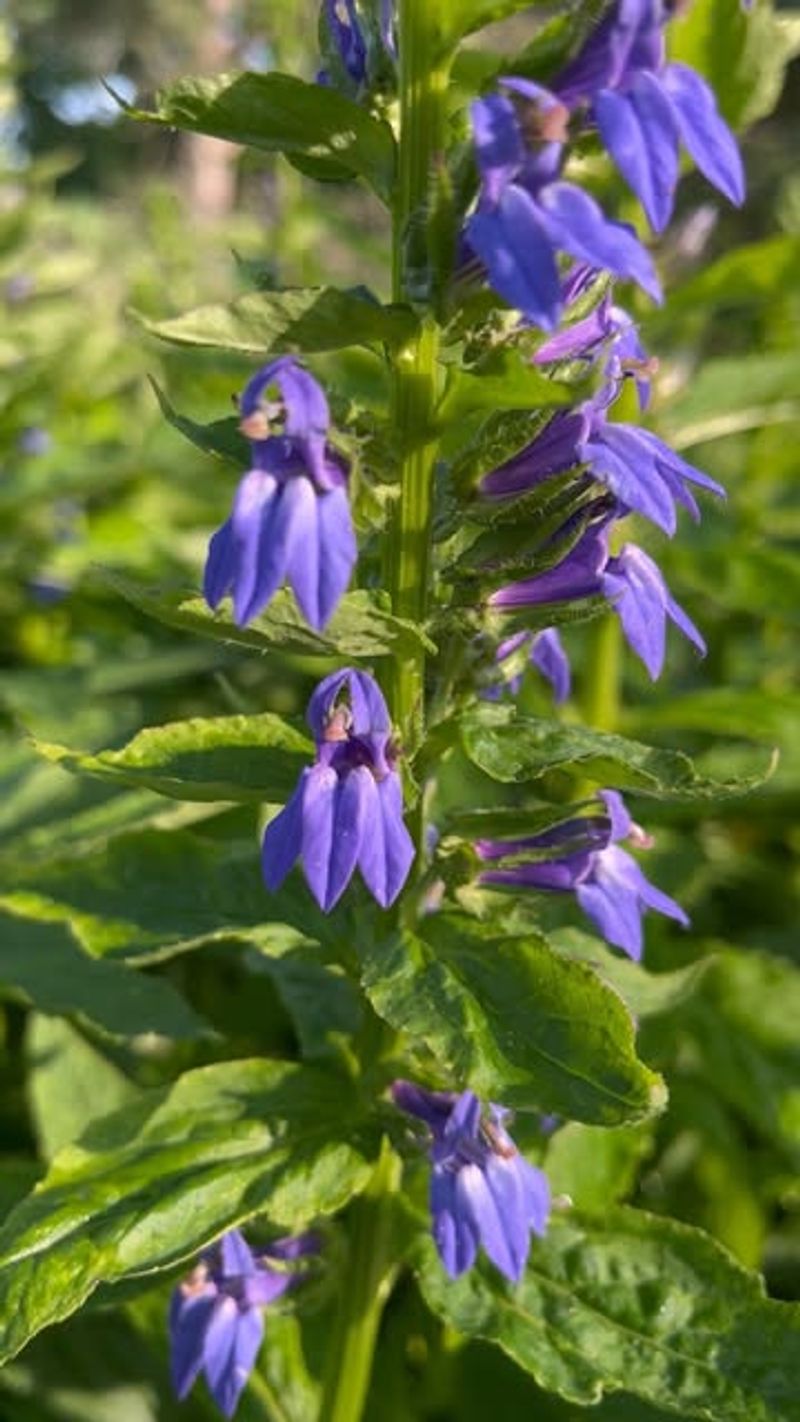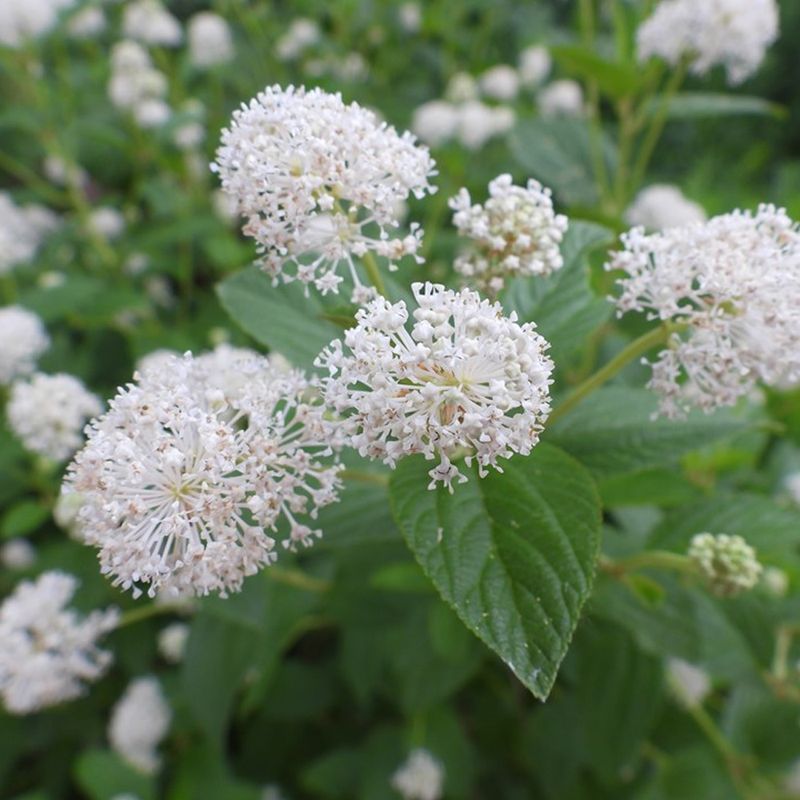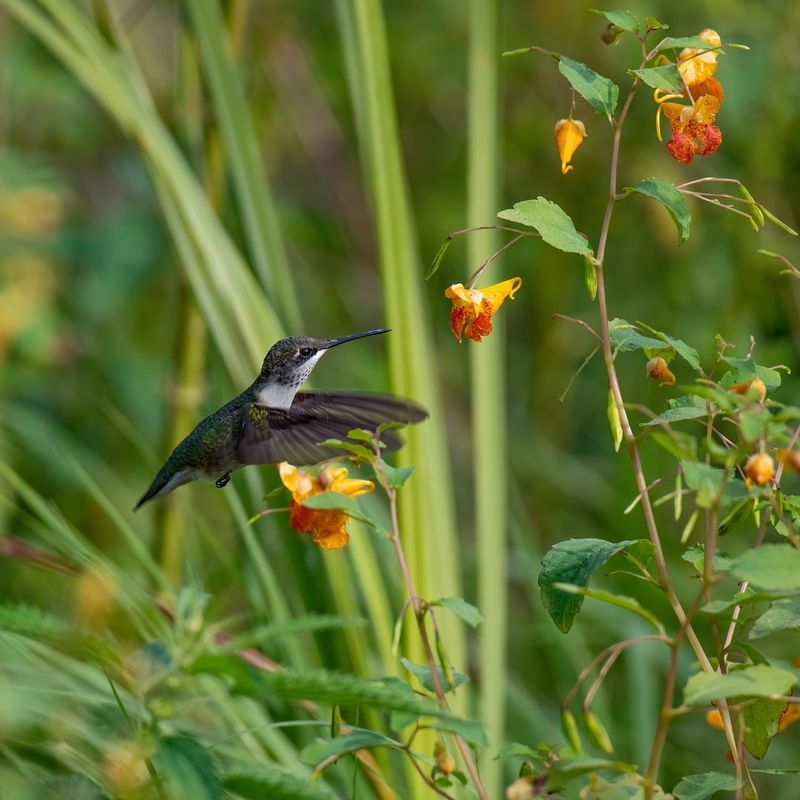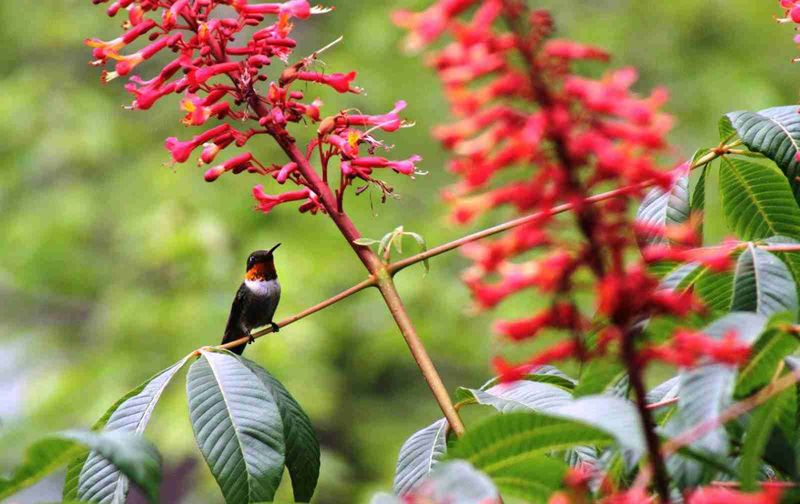Hummingbirds bring magic to any garden with their dazzling colors and aerial acrobatics. Planting native flowers is the best way to attract these tiny marvels while supporting your local ecosystem.
Native plants require less water and maintenance than exotic varieties, making them perfect for creating a sustainable haven for hummingbirds right in your backyard.
1. Cardinal Flower (Lobelia cardinalis)
Vibrant scarlet blooms rise like flaming torches above deep green foliage, creating an irresistible beacon for hummingbirds. Cardinal Flower thrives in moist areas, making it perfect for rain gardens or pond edges.
This native perennial blooms from mid-summer to fall, providing nectar when many other plants have finished flowering. Hummingbirds can’t resist the tubular shape of these flowers, which perfectly fits their specialized bills.
2. Trumpet Honeysuckle (Lonicera sempervirens)
Coral-red trumpet-shaped flowers dangle from woody vines, offering sweet nectar that hummingbirds find impossible to pass up. Unlike its invasive Japanese cousin, this native honeysuckle plays nicely with other garden plants.
Semi-evergreen in warmer regions, Trumpet Honeysuckle provides both food and shelter for wildlife. Its tubular blooms appear from spring through summer, creating a reliable food source for hungry hummingbirds returning from migration.
3. Bee Balm (Monarda didyma)
Crown-like whorls of scarlet, pink, or purple flowers sit atop aromatic foliage, creating a feast for both eyes and noses. Bee Balm’s spiky blooms resemble tiny fireworks exploding in your garden.
Part of the mint family, this native perennial spreads enthusiastically in favorable conditions. The nectar-rich flowers attract not only hummingbirds but also butterflies and beneficial insects, making your garden buzz with activity during summer months.
4. Columbine (Aquilegia canadensis)
Dancing on delicate stems, the nodding red and yellow flowers of Wild Columbine feature distinctive backward-pointing spurs filled with nectar. These unique blooms appear in spring, offering early-season nourishment for returning hummingbirds.
Growing in dappled shade or woodland edges, this native perennial adapts to rocky or poor soil conditions. Columbine reseeds readily, creating charming colonies that return year after year with minimal care, making them perfect for naturalistic gardens.
5. Coral Bells (Heuchera sanguinea)
Delicate sprays of tiny bell-shaped flowers dance above colorful foliage mounds, creating a fairy-like display in partly shaded areas. The coral-red blooms of this native perennial dangle from wiry stems, bobbing in the slightest breeze.
Modern varieties offer stunning leaf colors from purple to caramel, adding year-round interest to gardens. Hummingbirds zoom in for the nectar-filled flowers while gardeners appreciate Coral Bells’ drought tolerance once established and resistance to deer browsing.
6. Trumpet Creeper (Campsis radicans)
Dramatic orange-red trumpets cover this vigorous vine from summer through fall, creating a hummingbird magnet of epic proportions. Trumpet Creeper grows with wild enthusiasm, climbing trees, walls, or any available structure with its aerial rootlets.
Native to eastern woodlands, this powerful plant needs space to spread and strong support for its heavy growth. The spectacular trumpet-shaped flowers contain copious nectar, making them irresistible to hummingbirds who will defend a flowering vine as prime feeding territory.
7. Scarlet Sage (Salvia coccinea)
Spikes of vivid red tubular flowers rise above bright green foliage, creating a beacon for passing hummingbirds. This native sage blooms continuously from early summer until frost, providing a reliable nectar source throughout the growing season.
Unlike many perennials, Scarlet Sage often performs as a self-seeding annual in cooler regions. The flowers’ perfect tubular shape matches hummingbird bills exactly, making them efficient feeding stations for these aerial acrobats who return repeatedly to harvest the sweet nectar.
8. Penstemon (Penstemon digitalis)
Elegant white or pale purple tubular flowers line tall stems like tiny trumpets waiting for hummingbird visitors. Beardtongue, as it’s commonly called, features distinctive hairy stamens protruding from each bloom, giving it a whimsical appearance.
This drought-tolerant native perennial thrives in average to poor soils, making it perfect for challenging garden spots. The nectar-rich flowers appear in late spring and early summer, attracting not only hummingbirds but also beneficial bees and butterflies to your sustainable garden.
9. Royal Catchfly (Silene regia)
Clusters of star-shaped crimson flowers crown this rare prairie native, creating a royal feast for hummingbirds. Despite its name, Royal Catchfly doesn’t trap insects but instead attracts beneficial pollinators with its vibrant blooms.
Growing in full sun with average to dry conditions, this uncommon perennial adds drama to summer gardens. The flowers’ intense red color and tubular shape evolved specifically to attract hummingbirds, making this plant a perfect addition to wildlife gardens focused on supporting native species.
10. Indian Pink (Spigelia marilandica)
Remarkable tubular flowers featuring bright red outsides and sunny yellow insides create living fireworks in woodland gardens. Indian Pink blooms in late spring to early summer, adding vibrant color to shady spots when many spring bloomers have finished.
This southeastern native perennial grows slowly but steadily, forming attractive clumps over time. The unique flower shape and color combination evolved specifically to attract hummingbirds, who serve as the plant’s primary pollinators in its natural woodland habitat.
11. Anise Hyssop (Agastache foeniculum)
Spikes of lavender-blue flowers rise above licorice-scented foliage, creating a fragrant haven for hummingbirds and other pollinators. The tiny tubular blooms pack a powerful nectar punch that keeps hummingbirds coming back for more.
Drought-tolerant once established, this native perennial thrives in sunny spots with good drainage. The aromatic leaves can be used to make delicious tea, while the edible flowers add color to summer salads, making Anise Hyssop both beautiful and useful in sustainable gardens.
12. Foxglove Beardtongue (Penstemon digitalis)
Elegant white tubular flowers with purple striped throats line tall stems like tiny gramophones broadcasting to passing hummingbirds. Foxglove Beardtongue creates a dramatic vertical element in meadow gardens during late spring and early summer.
Adaptable to various soil types, this native perennial tolerates both dry conditions and occasional flooding. The tubular flowers provide nectar for hummingbirds while the seeds later feed native birds, making this plant a multi-season supporter of wildlife in sustainable landscapes.
13. Liatris (Liatris spicata)
Feathery purple spikes rise like floral rockets from grassy foliage, creating vertical drama that catches both human and hummingbird eyes. Unlike most flowers that bloom from the bottom up, Liatris blooms from the top down, creating an unusual display in summer gardens.
Also called Blazing Star, this native prairie plant thrives in full sun and average to dry conditions. The nectar-rich flowers attract not only hummingbirds but also butterflies and beneficial bees, making Liatris a powerhouse pollinator plant for sustainable landscapes.
14. Eastern Red Columbine (Aquilegia canadensis)
Nodding red and yellow flowers dangle like exotic lanterns from delicate stems, beckoning hummingbirds with their nectar-filled spurs. Eastern Red Columbine blooms in spring, providing crucial early-season nourishment for hungry hummingbirds.
Growing happily in woodland edges or rocky slopes, this adaptable native thrives where many plants struggle. The unique backward-pointing nectar spurs evolved specifically for hummingbird pollination, making this plant and bird perfect partners in the ecological dance of your garden.
15. Wild Bergamot (Monarda fistulosa)
Lavender pom-pom flowers crown aromatic stems, creating a fragrant feast for hummingbirds and beneficial insects alike. Wild Bergamot’s distinctive minty scent fills the air when brushed against, adding sensory delight to wildlife gardens.
This drought-tolerant native thrives in sunny meadows and prairie gardens. Unlike its showier cousin Bee Balm, Wild Bergamot’s subtle lavender blooms blend beautifully with other native plants while still providing essential nectar for hummingbirds throughout summer months.
16. Fire Pink (Silene virginica)
Star-shaped scarlet flowers float above low-growing foliage, creating fiery constellations in woodland gardens. Fire Pink’s brilliant red color stands out dramatically against green forest backgrounds, serving as a beacon for passing hummingbirds.
This short-lived perennial compensates for its brief lifespan by self-seeding readily in favorable conditions. Native to eastern woodlands, Fire Pink thrives in dappled shade and well-drained soil, making it perfect for naturalistic gardens where it can establish sustainable populations over time.
17. Great Blue Lobelia (Lobelia siphilitica)
Spikes of intense blue tubular flowers rise from lush foliage, creating cool contrast to traditional red hummingbird plants. Great Blue Lobelia blooms in late summer when many gardens need a fresh burst of color.
Preferring moist conditions, this native perennial thrives near water features or in rain gardens. While hummingbirds typically favor red flowers, they readily visit these sapphire blooms, especially when planted alongside complementary red natives, creating a diverse and sustainable feeding habitat.
18. New Jersey Tea (Ceanothus americanus)
Fluffy white flower clusters float above compact shrubby growth, creating a frothy display that attracts diverse pollinators including hummingbirds. New Jersey Tea earned its name during the American Revolution when its leaves were used as a tea substitute.
This drought-tolerant native shrub develops deep roots that help it survive challenging conditions. The nectar-rich flowers bloom in early summer, providing food for hummingbirds while the plant’s dense habit offers nesting sites and shelter, making it a multi-purpose addition to wildlife gardens.
19. Jewelweed (Impatiens capensis)
Orange spotted trumpets dangle like exotic jewels from succulent stems, creating natural hummingbird feeders in shady spots. Jewelweed’s unusual flowers hang horizontally, perfectly positioned for hovering hummingbirds to access their sweet nectar.
This native annual thrives in moist, partially shaded areas where many plants struggle. The fascinating seed pods explode when touched, delighting children and ensuring next year’s plants. Jewelweed also contains compounds that relieve poison ivy rash, making it both beautiful and useful.
20. Red Buckeye (Aesculus pavia)
Clusters of tubular red flowers cover this small native tree in spring, creating one of the earliest hummingbird feeding stations of the season. Red Buckeye’s palm-shaped leaves provide interesting texture even after the blooming period ends.
Growing to just 10-15 feet tall, this understory tree fits perfectly in smaller landscapes or woodland gardens. Hummingbirds returning from migration rely on these early blooms for crucial energy, making Red Buckeye an important component of sustainable wildlife gardens designed to support birds throughout the seasons.

